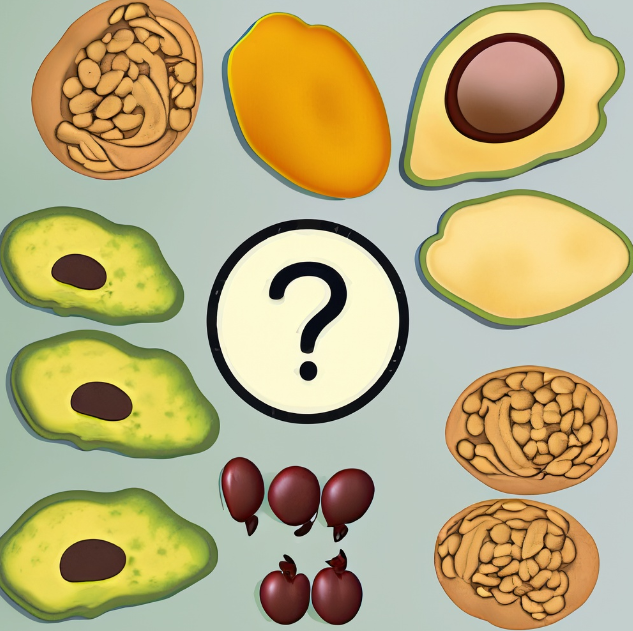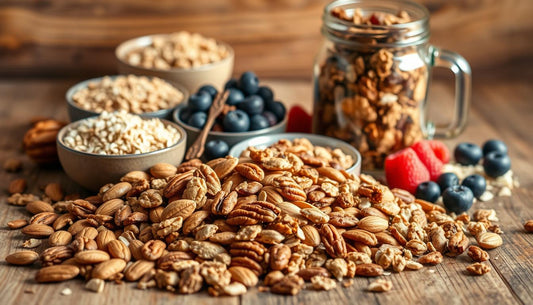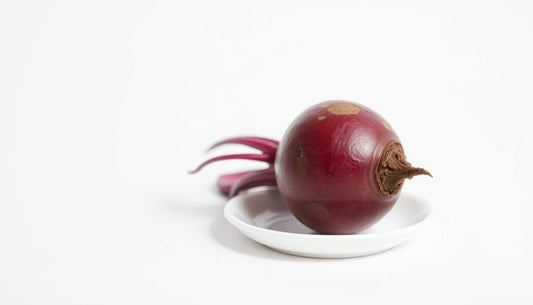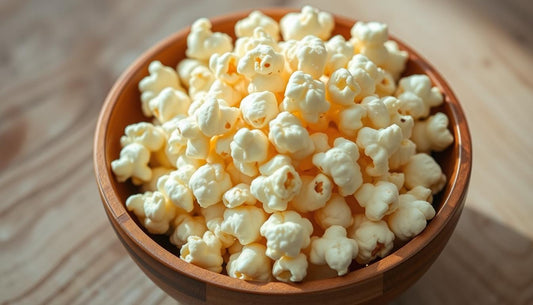
Polyunsaturated Fats vs. Monounsaturated Fats: What's the Difference?
Share
In nutrition, the term "fat" often carries a negative connotation. However, not all fats are created equal. Some fats are not only beneficial but also essential to our health. Among these are polyunsaturated fats (PUFA) and monounsaturated fats (MUFA), two healthy fats that play crucial roles in our bodies. Understanding the differences between these fats, their benefits, and their sources can guide us towards healthier dietary choices.
Understanding Fats
On a ketogenic diet, fats comprise a significant part of total calorie intake, often 70% or more. This includes saturated fats like those found in butter and red meat. In the past, saturated fats were thought to raise cholesterol levels and heart disease risk. However, more recent research indicates this relationship is more complex than previously believed.

Consumption of saturated fat has not been conclusively shown to increase cardiovascular risk, especially for those following a well-formulated low-carb, high-fat ketogenic diet. Studies demonstrate that keto diets can improve heart disease risk factors like blood pressure and triglycerides.
While butter and red meat contain saturated fats, they also provide essential nutrients when sourced from quality producers like grass-fed cows. Limiting intake of processed meats is recommended. But including moderate amounts of grass-fed butter and red meat as part of a ketogenic diet has not been shown to increase heart disease risk factors compared to a standard higher-carb diet. Current evidence indicates that saturated fats like butter and red meat can be included in a healthy ketogenic diet.
What are Unsaturated Fats?
Unsaturated fats have at least one double bond within their fatty acid chain. This double bond changes the structure and properties of the fat, making it healthier than its saturated counterpart. Foods such as oils, nuts, and fish contain unsaturated fats in a liquid state at room temperature. Two primary forms of unsaturated fats exist: monounsaturated (MUFA) and polyunsaturated (PUFA). Both types offer health benefits, but they differ in their chemical structure and the impact they have on your health.
Monounsaturated Fats (MUFA)
Monounsaturated fats possess a molecular structure that comprises only one carbon-to-carbon double bond. This structure allows them to help lower bad (LDL) cholesterol levels while maintaining good (HDL) cholesterol levels, contributing to heart health and the overall health of cells.
Monounsaturated fats are abundant in a variety of foods. Fats that benefit our health can be found in cooking oils like olive oil and avocado. Other sources include avocados, olives, and nuts like peanuts and cashews. Even some spreads, labelled "high oleic," contain monounsaturated fats. Adding these foods to your daily diet, you can experience the numerous advantages of consuming monounsaturated fats.
Examples of monounsaturated fats:
- Avocados: Avocados are a great source of monounsaturated fats and are a staple in many keto diets.
- Olive Oil: Olive oil is high in monounsaturated fats and is often used in cooking or as a salad dressing on a keto diet.
- Almonds and Almond Butter: Almonds are high in monounsaturated fats, and almond butter is a keto-friendly spread.
- Macadamia Nuts: Macadamia nuts are one of the highest in monounsaturated fats and lowest in carbs, making them great for a keto diet.
- Peanuts and Peanut Butter: While technically a legume, peanuts are high in monounsaturated fats and can be included in a keto diet in moderation.
- Olives: Including olives in a keto diet can be beneficial since they are high in monounsaturated fats, like olive oil.
- Rapeseed Oil: While we don't recommend rapeseed oil (Due to being highly processed), rapeseed oil is high in monounsaturated fats and known to be used on the keto diet (Some would say dirty keto)
- Sunflower Oil: Like rapeseed oil, it's highly processed and used on dirty keto. We don't recommend consuming this as it's highly processed.
Polyunsaturated Fats (PUFA)
Polyunsaturated fats, on the other hand, have more than one double bond in their carbon structure. Like monounsaturated fats, they can also help lower unhealthy LDL cholesterol. However, polyunsaturated fats are essential for your body's functions and play a role in building cell membranes and blood clotting. Unlike monounsaturated fats, your body can't make polyunsaturated fats, so you must get them from food.
There are two main types of polyunsaturated fats: omega-3 and omega-6 fatty acids. Your body needs both of these for brain function and cell growth. Foods high in polyunsaturated fats include sunflower and pumpkin seeds, cooking oils such as corn and safflower, and nuts like pine nuts.

Examples of Polyunsaturated fats:
- Fatty Fish: Salmon, mackerel, sardines, and trout are high in omega-3 polyunsaturated fats.
- Flaxseeds and Chia Seeds: These seeds are high in omega-3 fats and can be easily added to various dishes.
- Walnuts: Walnuts are a good source of omega-3 fats.
- Hemp Seeds: These are high in both omega-3 and omega-6 fats.
- Avocados: While avocados are mostly monounsaturated fats, they also contain some polyunsaturated fats.
- Olives and Olive Oil: Like avocados, these are primarily monounsaturated fats but contain some polyunsaturated fats.
- Almonds and Almond Oil: Almonds are a good source of polyunsaturated fats, and so is almond oil.
Polyunsaturated Fats vs. Monounsaturated Fats
While polyunsaturated and monounsaturated fats benefit our health, their differences lie in their molecular structure and how they impact our bodies. Monounsaturated fats have a single, double chemical bond, while polyunsaturated fats have two to six double bonds. This difference in structure influences how these fats behave in our bodies.
Both fats can help reduce LDL cholesterol, commonly known as "bad cholesterol." This can prevent it from accumulating in the arteries, leading to an increased risk of heart disease. However, they differ in their sources and specific health benefits. For instance, monounsaturated fats, found in foods like avocados and olive oil, are known for maintaining the overall health of cells. Polyunsaturated fats, on the other hand, are essential for building cell membranes and blood clotting. They are also crucial for brain function and cell growth.
Omega-3 and Omega-6 Fatty Acids
Omega-3 and omega-6 fatty acids are polyunsaturated fats your body needs for brain function and cell growth. However, your body can't produce these fats, so they must come from your diet.
Extensive research has been conducted on the heart health benefits of Omega-3 fatty acids. Research shows they can lower triglyceride levels and slightly increase HDL (good cholesterol) levels. Foods high in omega-3 fats include fatty fish like salmon and mackerel, flaxseeds, chia seeds, walnuts, and certain types of algae.
Omega-6 fatty acids, while also essential, are typically consumed in excess in Western diets. They are found in many types of vegetable oils and processed foods. While necessary for our bodies, an imbalance in the consumption of omega-6 and omega-3 can lead to inflammation and related diseases.
Saturated vs Unsaturated Fats on a Keto Diet
Saturated fats like butter and red meat were long thought to raise cholesterol and heart disease risk universally. However, research now shows that on a ketogenic diet higher in fats, saturated fat intake does not appear to confer the same risks seen in high-carb diets.
Rises in protective HDL and lower triglycerides typically accompany increases in LDL cholesterol. Numerous studies demonstrate keto diets improve heart disease risk factors like blood pressure.
In contrast, unsaturated fats like olive oil, avocados, nuts, and seeds have well-established benefits for heart health. Monounsaturated and polyunsaturated fats help lower LDL and raise HDL cholesterol.
While saturated fats may not need to be strictly limited on keto, emphasising unsaturated fats from plant and fish sources provides cardiovascular benefits. Pairing saturated fats from animal sources with unsaturated fats is optimal for health.
Moderation of any one macronutrient is recommended. But including saturated and unsaturated fats as part of a well-formulated ketogenic diet can significantly benefit when displacing refined carbohydrates.
The Role of Unsaturated Fats in a Healthy Diet
It cannot be emphasised enough how crucial unsaturated fats are for a healthy diet. These polyunsaturated and monounsaturated fats offer many health benefits, from lowering harmful cholesterol levels to reducing the risk of heart disease. They also provide essential fats our bodies need but can't produce independently.
However, it's not just about consuming unsaturated fats; it's about balancing your fat intake. While replacing saturated fats with unsaturated fats is beneficial, it's equally important to balance omega-3 and omega-6 fatty acids, both polyunsaturated fats. It is essential to avoid consuming too many omega-6 fatty acids in one's diet as it can contribute to inflammation and related health issues. Incorporating omega-3-rich foods is therefore critical to maintaining overall health.
The British Heart Foundation recommends that most of the fats you eat be unsaturated, advising that 25-35% of your daily calories come from these fats. Foods with these healthy fats include fish, nuts, seeds, and plant-based oils.
Conclusion
Understanding the differences between polyunsaturated and monounsaturated fats is critical to making informed dietary choices. Both fats offer unique health benefits and play crucial roles in our bodies. Including a mix of these healthy fats in our daily meals can aid in lowering our detrimental cholesterol levels, minimise the possibility of heart disease, and optimise our body's performance.
While dietary fats can seem complex, remember this simple takeaway: not all fats are created equal. So, the next time you're planning your meals, consider the types of fats you're consuming. Opt for unsaturated fats, and remember to balance your omega-3 and omega-6 fatty acids intake. Your body—and especially your heart—will thank you.




